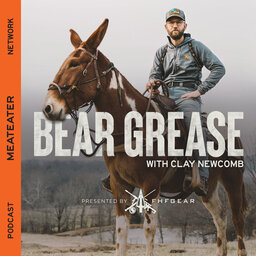 This Country Life
This Country LifeEp. 111: THIS COUNTRY LIFE - Catching Catfish with Trotlines
This week, Brent gives you the low down on setting trotlines for catfish. As traditional as it is effective, trotline fishing has been around forever because it works! Setting one up is something you can do yourself, and Brent's here to walk you through it. He'll also share a cautionary tale about packing for an expedition, and a sad solution to forgotten taters. As Clay Newcomb might say, you ain't gonna wanna miss this one!
Connect with Brent and MeatEater
MeatEater on Instagram, Facebook, Twitter, and Youtube
Shop Bear Grease Merch
